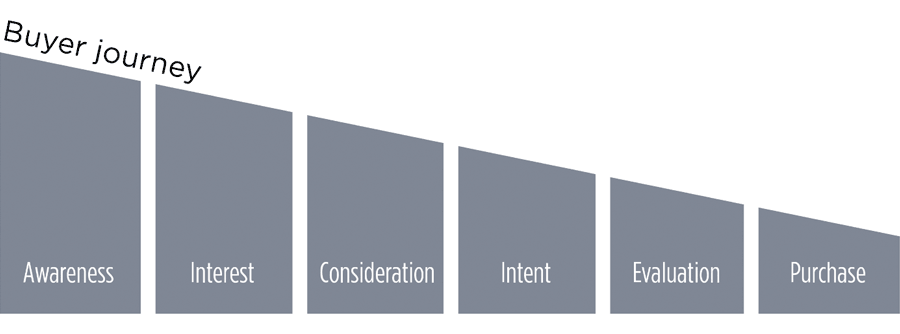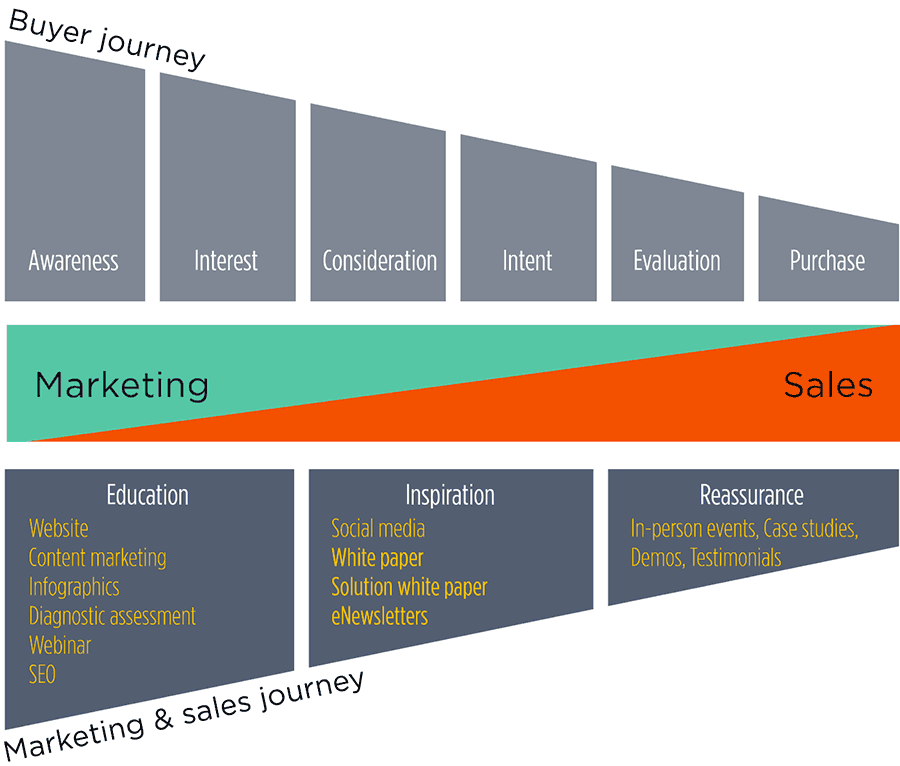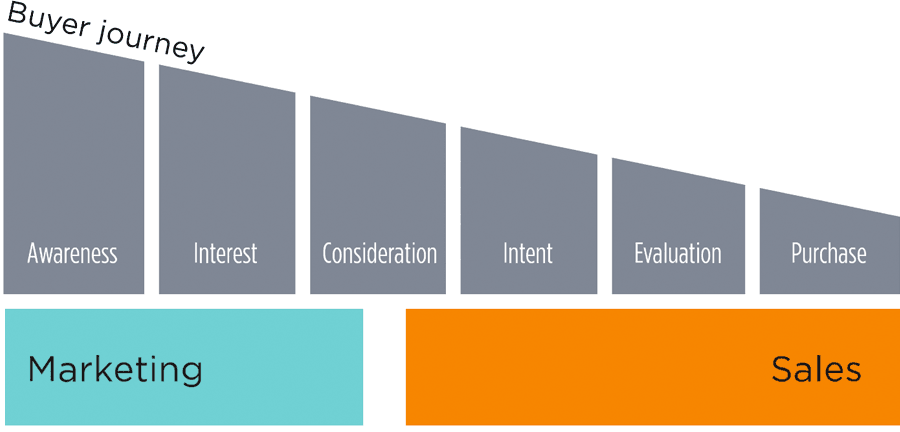{Drive Your Brand: part 1}
Summary
For the first part of our Drive Your Brand series, we’ll cover the process of plotting out how your external audience interacts with your brand. Each white paper in this four-part series will cover an individual topic worth considering as you build and strengthen your technology brand.
Mapping the buyer journey
For innovative technology companies to reach the pure nirvana of sales and marketing alignment, you should first conduct a full and honest brand assessment. You can’t get where you’re going until you know where you stand — and the brand assessment process documents where your brand stands currently and starts to map out where you want to go. A key piece of brand assessment is mapping out your buyer journey.
Build customer profiles for each distinct buyer journey.
Buyer journey maps are not a one-size-fits-all proposition. It’s critical to make sure you first understand the unique buyer journey for each customer profile. The journey a Japanese manufacturer takes to buy a 3D printer for jewelry might look very different than that of a multi-generational, family-owned jeweler in North America.
If you identify only one buyer journey, you’re either very highly specialized (that’s good), or you’re too broadly generalizing your buyers (that’s bad). Likewise, if you identify too many journeys, you’re either offering many things to many people or your journeys are getting too specific.
Each industry varies somewhat. We have a number of clients who need to consider buyer journeys on two levels: one, the dealers or VARs who sell their products, and two, the actual end-user. Different sales regions or market classes might also warrant their own buyer journeys.
Know your known knowns and your known unknowns.
Ideally, you’ll have accurate customer profiles and enough sales data to map out your buyer journeys — at least anecdotally. Be cautious here not to build buyer journeys based on broad assumptions. Identify what you know and what you don’t. For instance, you might know how most potential buyers find you, but not how they go about comparing you to the competition.
If some steps along your buyer journey remain mysterious at this point (known unknowns), indicate those in your map and look to gain that data through upcoming sales. You might even be able to interview past customers and backfill some data.
Innovative technology buyers tend to follow this path:

1. Awareness
2. Interest
3. Consideration
When marketing and sales are not aligned, buyers at the consideration stage can fall through the cracks
4. Intent
5. Evaluation
6. Purchase
You have a powerful opportunity to turn new customers into powerful brand advocates.
Aligning marketing and sales shortens sales cycles, makes tracking marketing efforts easier and builds brand equity.
The old model, (shown below) illustrates the challenge when marketing and sales work in their individual silos. Often the two departments articulate your brand story in distinctly different ways. Sales folks think your marketing materials are useless to them. Marketing folks think the sales folks are renegades that won’t toe the line.

When you consider your sales and marketing departments not as individual silos, but interlocking parts, you start to boost your bottom line and build brand love. As the model below indicates, marketing will continue to do the heavy lifting up front and sales will always close the deals, but each department is there for the other throughout every step of the buyer journey.

Sales and marketing alignment empowers sales personnel to help shape the brand voice and support marketing efforts before they get off the ground. Marketing personnel gain a better understanding of actual customers and can track the efficacy of their efforts throughout the entire buyer journey.

A shared responsibility, a mutual benefit
Sales and marketing have an equal, shared responsibility to help guide the buyer through their journey. When both can clearly see their role along the entire journey, sales and marketing get out of their silos and get to work. All sales and marketing efforts should be designed to perform a specific function along the buyer journey: educate, inspire and reassure.
1. Educate
2. Inspire
3. Reassure
About Toolbox Creative:
At Toolbox Creative, we’re dedicated to bridging the gap between the science of science and the art of selling it — building love connections between technology brands and the customers that love them.
Toolbox Creative offers a powerful engine to grow technology brands and take on the big players in the field. We help innovative technology companies look and sound as good as they truly are, increasing brand equity, boosting media buzz and making the most of marketing dollars.




